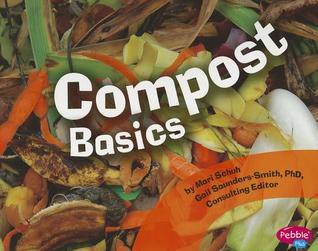
What is nonfiction and what are some features of nonfiction books?
Note: In February and March, kindergarten works on a Construction unit. In April and May, they study Our Earth. Whatever the timing is and whatever you start with, begin with this
Introduction: Ask the students if they can explain what fiction and nonfiction are. Let them know the difference, then give some examples. (If I wrote about a sock monkey who flew to the moon in a toy car, would that be fiction or nonfiction? If I wrote a book about an elephant family that I had studied for a nature TV show, and I included photographs I had taken, would that be fiction or nonfiction?) Explain that we have mostly read fiction so far this year, and now we are going to read some nonfiction.

 Readaloud: Cranes by Linda D. Williams. Point out the table of contents and the call number on the spine.
Readaloud: Cranes by Linda D. Williams. Point out the table of contents and the call number on the spine.
 Construction OR Our Earth (this can fit either).
Construction OR Our Earth (this can fit either). Ask kids what they already know about compost, creating the K column of a KWL chart. Before reading Compost Basics by Mari Schuh (Pebble), point out the call number, the table of contents, and the glossary (first time for this text feature). Run down the list of terms in the glossary and see which ones they already know.
Ask kids what they already know about compost, creating the K column of a KWL chart. Before reading Compost Basics by Mari Schuh (Pebble), point out the call number, the table of contents, and the glossary (first time for this text feature). Run down the list of terms in the glossary and see which ones they already know. 7oaks.org has a sorting game that you can download and cut out; give each student a piece of "garbage" and have them place it into a container for trash, recycling, or composting. After checkout, they can color this page from Thoughtfully Sustainable.
7oaks.org has a sorting game that you can download and cut out; give each student a piece of "garbage" and have them place it into a container for trash, recycling, or composting. After checkout, they can color this page from Thoughtfully Sustainable. Let the students know that we are going to create another KWL chart, this time about sloths. Ask them what they already know, and what they would like to know, and record their answers on the chart.
Let the students know that we are going to create another KWL chart, this time about sloths. Ask them what they already know, and what they would like to know, and record their answers on the chart. Choose one W at a time and use the table of contents for several different books to look for the answers. If the answers are the same in at least two books, write the fact on the chart. (You can also access books via Epic! if you don't have a lot on the shelf.)
Choose one W at a time and use the table of contents for several different books to look for the answers. If the answers are the same in at least two books, write the fact on the chart. (You can also access books via Epic! if you don't have a lot on the shelf.)
I need to take a photo of a nonfiction book, but here is what I have so far. For question 6, the fiction books are all Mock Caldecott reads that are clearly made up.
1 = 0-2 correct answers
2 = 3-4 correct answers
3 = 5 correct answers
4 = All answers correct (two of the questions ask basically the same thing)
AASL: I.A.1 - Formulate questions about a personal interest or a curricular topic; I.A.2 - Recall prior and background knowledge as context for new meaning; III.A.2 - Develop new understandings through engagement in a learning group; IV.A.2 - Identify possible sources of information; IV.A.3 - Make critical choices about information sources to use; IV.B.1 - Seek a variety of sources; IV.D.1 - Perform ongoing analysis of and reflection on the quality, usefulness, and accuracy of curated resources; V.A.1 - Read widely and deeply in multiple formats and write and create for a variety of purposes.
RI Common Core: R.I.K.1 - With prompting and support, ask and answer questions about key details in a text; R.I.K.5 - Identify the front cover, back cover, and title page of a book; R.I.1.5 - Know and use various text features (e.g., tables of contents, glossaries) to locate key facts or information in a text.; R.I.K.9 - With prompting and support, identify basic similarities in and differences between two texts on the same topic; R.I.K.10 - Actively engage in group reading activities with purpose and understanding; R.SL.K.3 - Ask and answer questions in order to seek help, get information, or clarify something that is not understood
Rhode Island Cross-Curricular Proficiencies: Communication - Select and analyze relevant information; Problem Solving and Critical Thinking - Identify relevant information/data from resources; utilize information; Research - Select, use and adapt research tools to access information.
Rhode Island School Library Curriculum Priority Skills: 1.1 - Connect - Shares what is known about the general topic to elicit and make connections to prior knowledge; Responds to background information (delivered through videos, stories, texts, discussions) by restating/retelling main ideas and details about the topic; 1.1 - Wonder - Develops “I wonder” questions with the class while reading or listening to texts about the research topic; 1.1 - Investigate - Recognizes the library has many different kinds of materials; Identifies facts about a topic; With help, finds facts and briefly summarizes them via writing, drawing, or verbalization to answer basic research questions; 1.1 - Construct - Sorts books by fiction vs. nonfiction; 2.1 - Gathers information from illustrations and text features